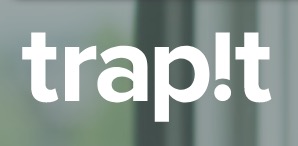
If You’re Social Selling Only on LinkedIn, Something’s Wrong
For some, social selling has become synonymous with LinkedIn. Sales and marketing leaders have come to believe that LinkedIn is the only relevant network for B2B social selling. And that’s problematic.
To be sure, LinkedIn is an essential part of any social selling strategy, given that LinkedIn is the world’s largest professional social network. But LinkedIn is not a seller’s only option. Sellers should be active where their buyers are. And in a B2B context, many buyers use Twitter.
In fact, Twitter has several social selling advantages that LinkedIn does not have. Let’s take a look at a few of them…
1. It’s Easier to Connect with Buyers on Twitter
To see someone’s updates on LinkedIn, you have to jump through hoops. You know the drill. First, you have to write a connection request message. Then, you have to wait until the person logs on to the network. Then, you have to pray that your request does not get lost among all the other LinkedIn requests that the person has received. Then, you have to pray that the person accepts your request. And then, you can finally see the person’s updates in your LinkedIn feed.
Twitter, on the other hand, removes the hoops. (Cumbersome connection requests, be gone!) With Twitter, you simply find someone and click the “Follow” button. Presto! Their updates will appear in your Twitter feed.
Heck, you don’t even need to follow someone to know what’s on his or her mind. Once you locate your prospect on Twitter, you can begin to form a portrait of your buyer because you can see his or her previous tweets.
2. Twitter Gives You a Well-Rounded Portrait of the Person
Since LinkedIn is the professional network of choice, we often project a one-sided image of ourselves. That is, we tend to portray ourselves as buttoned-up professionals when we use LinkedIn.
Twitter doesn’t have the same professional expectations, and as such, we don’t have the same reservations about showing multiple sides of our personalities. Twitter is the virtual water cooler where people gather to discuss industry news, their hobbies, their daily musings, and pop culture.
Take, for instance, this tweet from Trapit’s CEO:
On LinkedIn, an article about Mr. Robot would seem misplaced, but on Twitter, it’s appropriate. And if you were trying to develop a business relationship with Trapit’s CEO, it’s helpful to know that Henry likes Mr. Robot. That knowledge is good for building rapport – both online and offline. For example, you could respond to his tweet and start a conversation, or you could casually drop a reference to Mr. Robot during a sales call.
3. Twitter Makes It Easy to Find Relevant Conversations
Twitter has a built-in conversation finder. It’s called the hashtag. While adolescents and comedians might enjoy general hashtags like #yolo (You Only Live Once), professionals have their own set of hashtags. For instance, every day, there are countless tweets about #SocialSelling.
Twitter users include hashtags in their tweets because they want their posts to be discovered by others. (And since Twitter is an open network, other people can easily discover those musings.) So, take the time to investigate relevant hashtags for your industry.
Once you find the right hastags, use them in your tweets so that like-minded people can find you. And don’t be afraid to jump into conversations and start discussing ideas with others. In the process, you can establish yourself as a thought leader and build your professional network.
Here are some hashtags that you can try:
4. Twitter Users Log in More Frequently
For social selling to work, your buyers need to have accounts on social networks, and they need to be active on those accounts. Otherwise, engagement won’t happen.
Pew’s research suggests that you’ll have an easier time of reaching your buyers on Twitter – compared to your buyers on LinkedIn. Why is that? Twitter users tend to log in more frequently than LinkedIn users, making it more likely that they will see your tweets.
5. Twitter Users Are Looking to Learn about Their World
We’ve created a false binary about social media. The binary suggest that there’s LinkedIn (where people want to learn and grow); then there’s every other social network (where people presumably don’t care about learning and just want to have a good time).
This binary couldn’t be further from the truth. Twitter users, for instance, are actively trying to make sense of their world. 81% of Twitterers use the network to keep up with the news on a daily basis.
If you’re a savvy salesperson, a lightbulb just turned on. You’re thinking, People want the news? I can give them news! On Twitter, you can become a go-to resource for your buyers by tweeting about industry news and supplying thought leadership content.
In so doing, you will build rapport with buyers and increase their social networks. Purveying informational content, after all, is one of the best ways to expand your reach on Twitter.
In Short…
It’s foolish to think that you can engage all of your buyers on Twitter. At the same time, it’s foolish to think that all of your buyers will be on LinkedIn.
A good social selling program will span across networks. It will teach sellers best practices for each network. And it will set KPIs that are appropriate for each network.
Whatever you do, don’t get caught up in the mentality that LinkedIn is the sole network for social selling.
Want More Great Tips?
Check out the Executive Guide to Social Selling Success and learn how to align your sales, marketing, and sales enablement teams.